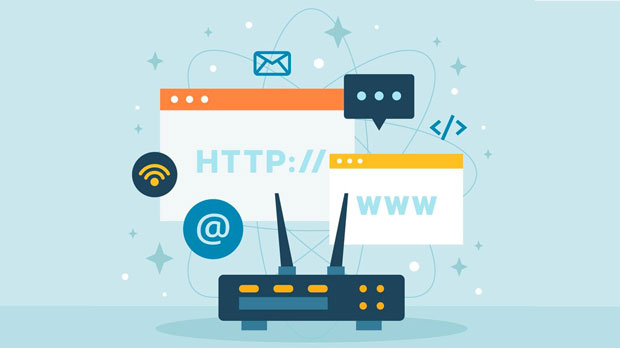In today's rapidly evolving digital world, proxies have become essential tools for ensuring privacy, security, and accessibility. Among the many types of proxies available, rotating proxies—especially cheap rotating proxies—are gaining significant attention. The question arises: will cheap rotating proxies become the mainstream proxy type? This article will explore the growing popularity of rotating proxies, their advantages and disadvantages, and whether they have the potential to dominate the market. By analyzing various factors such as cost-effectiveness, efficiency, and reliability, we aim to determine whether cheap rotating proxies are on the path to becoming the go-to choice for users. The Rise of Proxies in Digital Security and PrivacyProxies serve as intermediaries between users and the internet, masking users' IP addresses and offering increased privacy. With the increasing concerns around online surveillance, data breaches, and the need for anonymity, proxies are playing a more crucial role in online activities. For businesses and individuals who want to protect their identity, secure their internet connection, or access geo-blocked content, proxies provide the perfect solution.The need for proxies has grown exponentially over the years, and various types of proxies have emerged. static proxies, dedicated proxies, and rotating proxies are among the most popular choices. Among them, rotating proxies, which change the IP address used by the user on a regular basis, have gained increasing attention. In particular, cheap rotating proxies are appealing to a wider range of users due to their affordability and versatility.Understanding Cheap Rotating ProxiesCheap rotating proxies are a specific type of rotating proxy that automatically changes the IP address at set intervals. Unlike static proxies, which use a single IP address, rotating proxies use multiple IP addresses from a pool, offering a higher level of anonymity and security. The cheap nature of these proxies makes them an attractive option for businesses and individuals who need to scrape data, bypass geo-restrictions, or conduct multiple tasks online without exposing their true identity.These proxies are often favored by digital marketers, SEO experts, and web scrapers who require a large volume of IP addresses to carry out automated tasks without being blocked or detected. The constant rotation of IP addresses ensures that users can avoid detection by websites, which may flag repetitive access from a single IP address.The Advantages of Cheap Rotating Proxies1. Cost-Effectiveness:The most prominent feature of cheap rotating proxies is their affordability. Traditional dedicated proxies tend to be expensive, especially for businesses or individuals who require large numbers of proxies. In contrast, cheap rotating proxies offer a more budget-friendly solution, making them accessible to small businesses, startups, and individual users who need to scale their proxy usage without breaking the bank.2. Increased Anonymity and Security:Rotating proxies provide enhanced anonymity, as the IP address changes frequently. This makes it difficult for websites to track or block users. For businesses involved in web scraping or data mining, rotating proxies are a critical tool in ensuring the success of their operations. The use of multiple IP addresses significantly reduces the chances of getting flagged by websites, enhancing both privacy and security.3. Bypassing Geo-Restrictions:One of the most popular uses for rotating proxies is bypassing geo-restrictions. Cheap rotating proxies allow users to access content that may be restricted based on their geographic location. This is especially useful for users who need to access international websites or services, such as streaming platforms that restrict content based on region. With rotating proxies, users can easily switch between different locations and access geo-blocked content from anywhere in the world.4. Enhanced Scraping Capabilities:For businesses involved in web scraping or competitive analysis, cheap rotating proxies are an invaluable tool. Scraping websites for data can be challenging, especially if the website detects and blocks repetitive requests from the same IP address. With rotating proxies, businesses can avoid IP bans by ensuring that each request comes from a different IP address, allowing for seamless scraping without interruption.The Challenges of Cheap Rotating ProxiesWhile cheap rotating proxies offer numerous advantages, they are not without their challenges. Understanding these limitations is essential for users considering adopting this type of proxy.1. Reliability Issues:Cheap rotating proxies may not always provide the same level of reliability as premium proxy services. Users may encounter slower speeds, frequent IP blacklisting, or IP rotation that is not as seamless as desired. These issues can affect the quality of services for businesses that rely on proxies for time-sensitive tasks. Users must carefully consider whether the cost savings are worth the potential reliability trade-offs.2. Quality of IP Pool:Not all cheap rotating proxy services offer high-quality IP pools. The quality of the IP addresses used in the rotation process is crucial for avoiding detection and blocking. Some cheap providers may use low-quality IP addresses that are already flagged by websites, leading to a higher risk of being blocked. Users should thoroughly vet proxy providers to ensure that their IP pools are diverse and reputable.3. Legal and Ethical Concerns:Rotating proxies are often used for tasks like web scraping, data collection, and bypassing restrictions. While these tasks are not inherently illegal, they can sometimes raise ethical or legal concerns, especially if done without the consent of the website owner. Users must be aware of the legal implications of using rotating proxies for specific purposes, as violating terms of service can lead to penalties or legal actions.Will Cheap Rotating Proxies Become the Mainstream Proxy Type?Given the advantages and challenges of cheap rotating proxies, the question remains: will they become the dominant proxy type?On one hand, the affordability and increased functionality of rotating proxies make them an attractive option for a broad spectrum of users. The growing demand for online privacy, security, and access to geo-restricted content continues to fuel the need for proxies. Additionally, the cost-effectiveness of cheap rotating proxies makes them accessible to a wide range of businesses and individuals who may not be able to afford dedicated proxies.On the other hand, the potential reliability and quality issues associated with cheap rotating proxies could limit their widespread adoption. For businesses that require the highest level of performance and security, premium proxies may remain the preferred option. The quality of the IP pool and the reliability of the proxy service will be crucial factors in determining whether cheap rotating proxies can truly replace more expensive alternatives.In conclusion, while cheap rotating proxies are unlikely to completely replace premium proxies, they are certainly poised to become a mainstream option for many users. As the demand for cost-effective, reliable, and secure proxies continues to rise, cheap rotating proxies are likely to gain significant traction in the market, especially for users who prioritize affordability and anonymity over top-tier performance.In summary, cheap rotating proxies are emerging as a popular option for individuals and businesses looking for affordable, reliable, and secure proxy solutions. While they offer numerous benefits, such as increased anonymity, cost-effectiveness, and the ability to bypass geo-restrictions, they also come with challenges such as reliability concerns and potential legal risks. As the market for proxy services continues to evolve, cheap rotating proxies are likely to become an integral part of the proxy landscape, but they may not completely replace premium alternatives. Users should carefully assess their specific needs and choose the right proxy service accordingly to ensure the best results.
Oct 17, 2025



































































